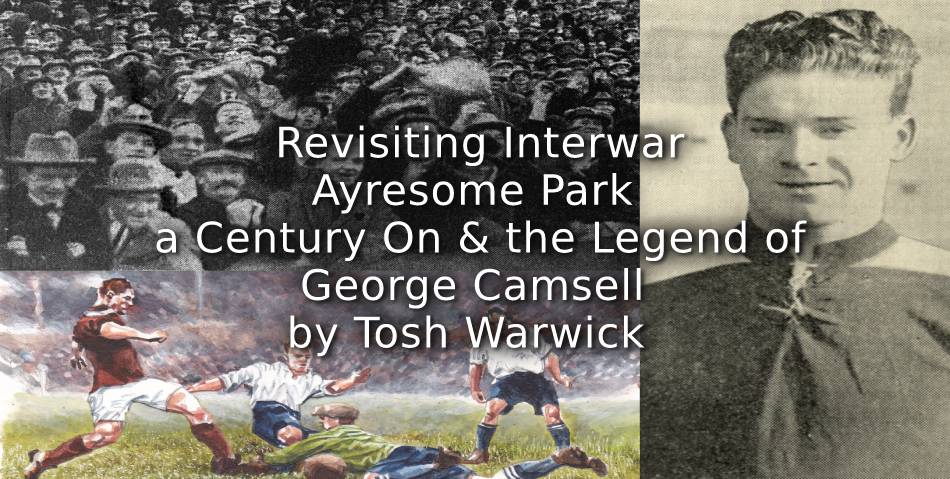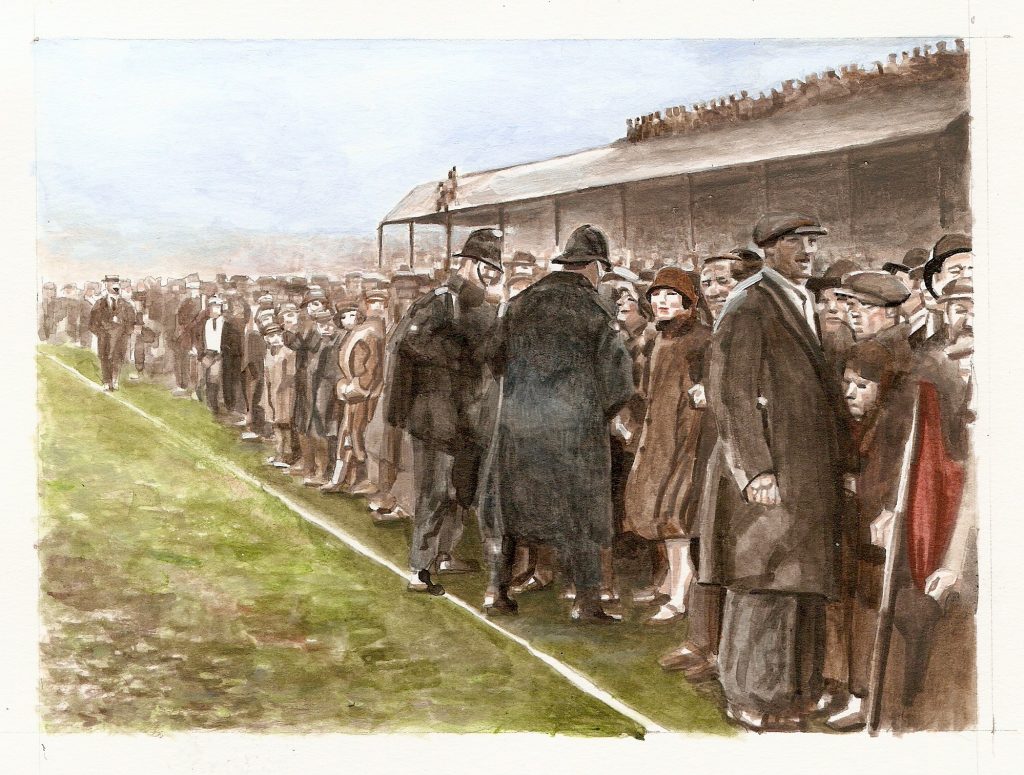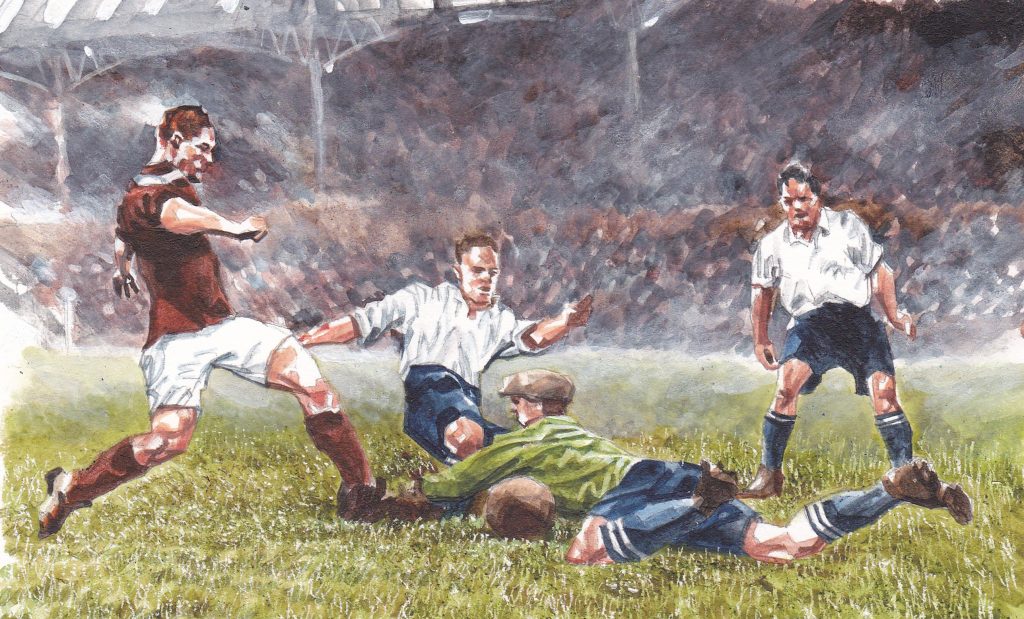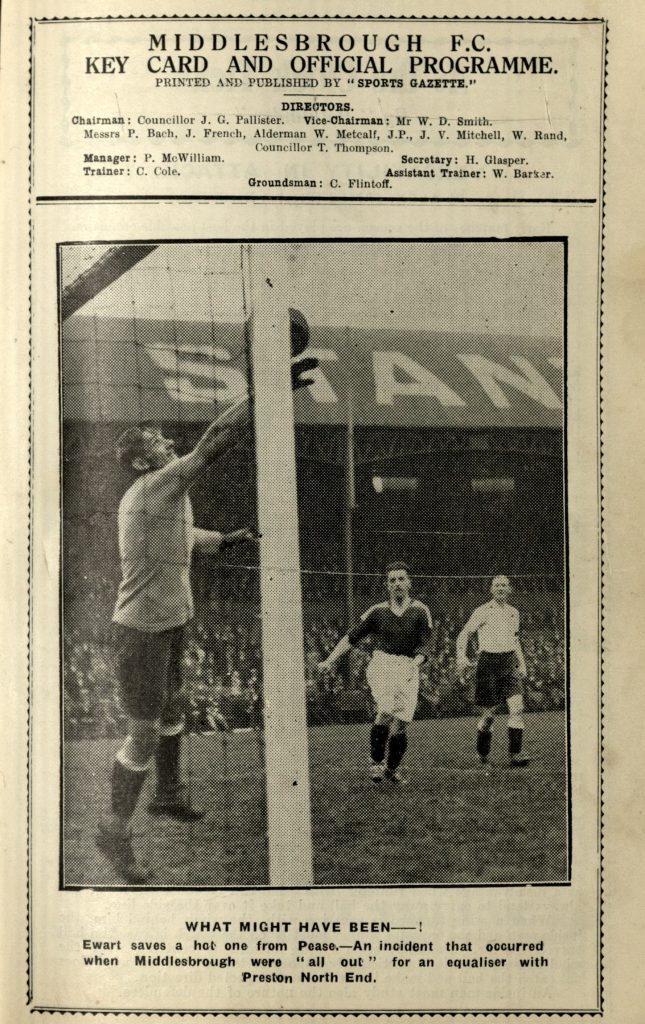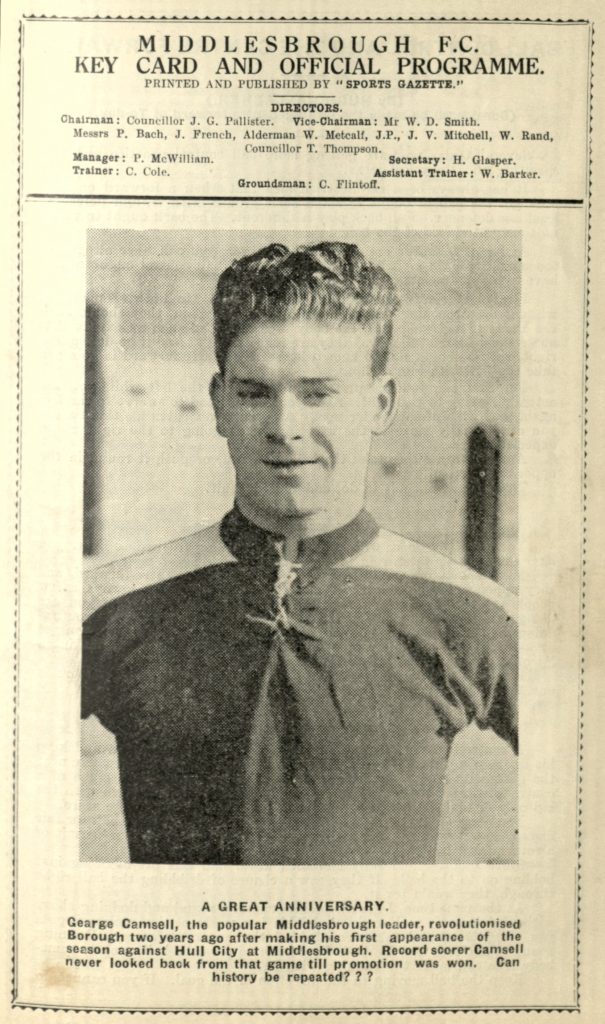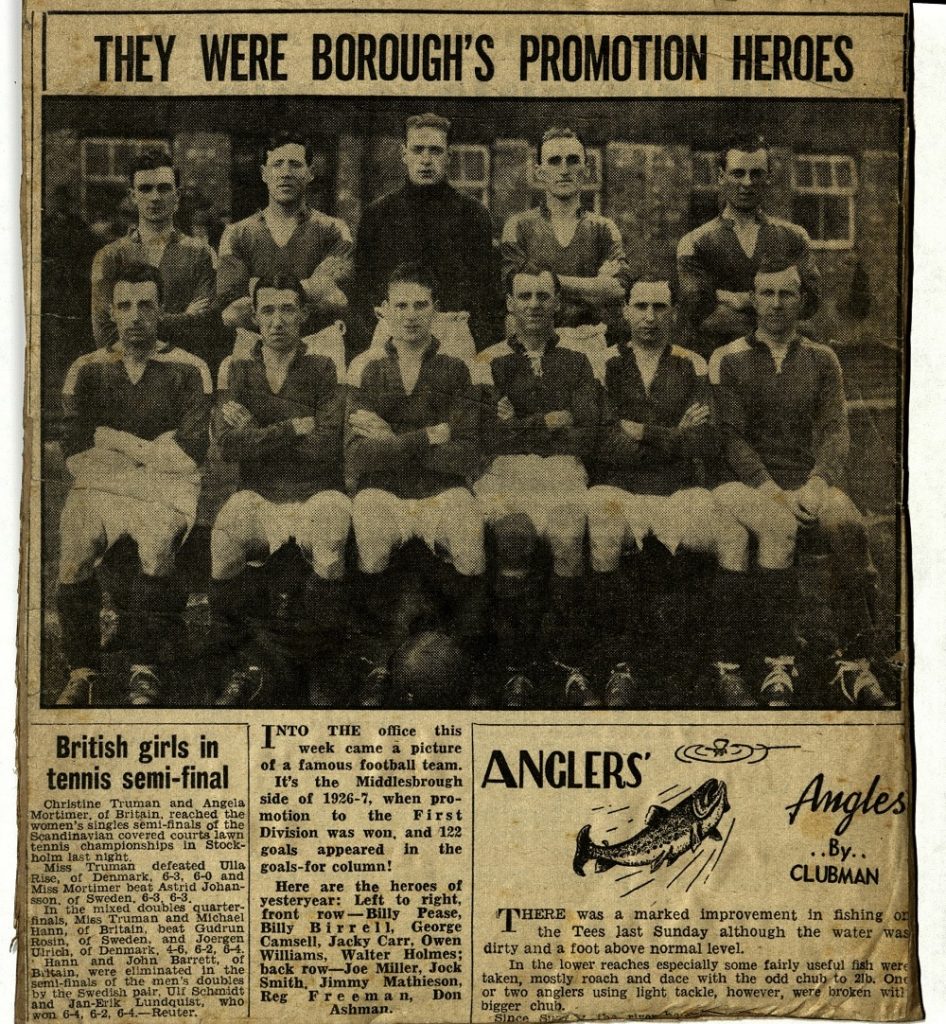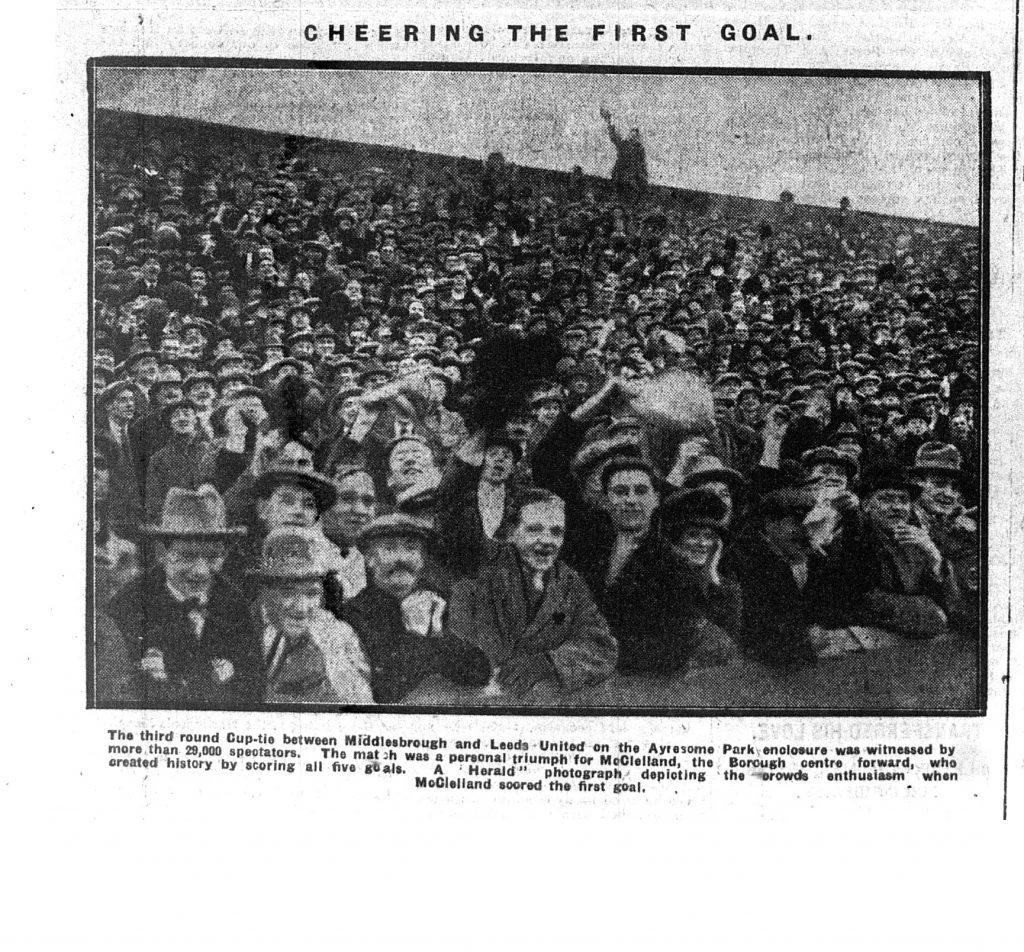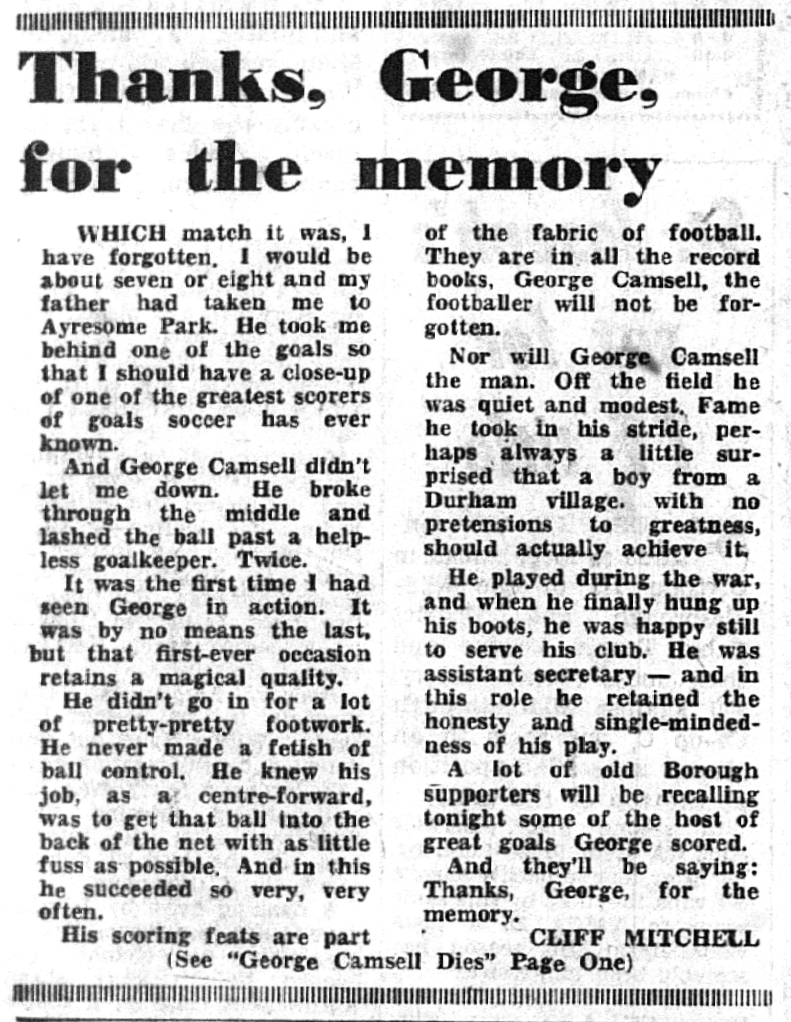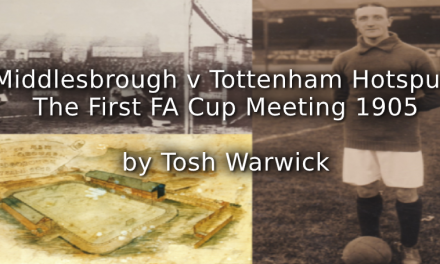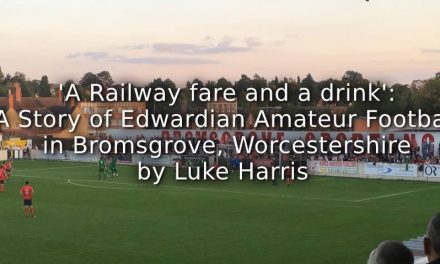As part of new research project marking the 25th anniversary since Middlesbrough’s last season at Ayresome Park, Manchester Metropolitan historian and Boro fan Dr Tosh Warwick revisits the interwar years at the famous old ground and the story of legendary goalscorer George Camsell…
The end of the First World War brought huge changes to life in Britain with millions wounded and over 700,000 men never to return home. The impact was felt on the pitch and in the stands at Ayresome Park with a number of Boro players, staff and supporters killed and injured in the conflict. The promising pre-war side was decimated and as the town found itself in turmoil amidst trade decline, Boro too struggled to replace lost, sold and retired stars and were relegated in 1924 after only seven league wins.
-
Richard Piers Rayners depiction of a record 43754 Ayresome crowd witnessing Camsells brace in a 2-1 win over Man City in December 1926
Richard Piers Rayner
In the following two seasons the Ayresome faithful endured mid-table finishes and witnessed the end of 213-goal record goalscorer George Elliott’s Boro career. The goals of Jimmy McClelland, including all five goals in a 5-1 defeat of Leeds United in 1926, provided a short-term solution but ultimately a longer-term solution was found following the signing of promising young forward George Camsell from Durham City. A record 59 league goals in the first of two 1920s promotion campaigns saw Camsell well on his way to becoming Middlesbrough’s all-time top goalscorer as Boro stormed to the 1926/27 Second Division title. The incredible record included all five Boro goals in a Christmas Day win at Manchester City and four goals per match in successive home victories over Portsmouth and Swansea. The return to the top flight started promisingly with successive wins at Ayresome Park including four goals by Camsell in a 4-2 win over an Everton side featuring Dixie Dean. However, Boro fell away and suffered relegation whilst Dean’s 60 League goals helped the Toffees win the championship and the Everton forward surpass Camsell’s goalscoring record set in the previous campaign.
-
Richard Piers Rayner recreates an action shot of Camsell from a 3-1 win over Southampton in 1926
(Richard Piers Rayner)
Boro bounced back immediately aided by Camsell’s 33 goals and Billy Pease’s 28-goal haul, including three for Camsell and four for Pease in an 8-3 defeat of Wolves described in Paylor and Wilson’s Ayresome Memories as the ‘Camsell and Pease Show’. With Boro promoted with games to spare the Key Card programme for the end of season title decider with nearest rivals Grimsby Town depicted the ‘SS Boro’ bound for Division 1 and a Camsell brace in a 3-0 win ensured the reds sailed as champions. The following week Camsell made a goalscoring international debut against France and his 18 England goals in just nine matches remains an England record for the highest average goals per game by any full international to have played more than one game.
-
A Key Card Programme from 1928
(courtesy of Pat Webster)
-
A Key Card Programme from the 1928-29 season featuring George Camsell
(courtesy of Pat Webster)
The early 1930s brought a number of challenging seasons with Boro finishing no higher than 16th between 1932 and 1935 with Camsell’s goals proved vital in keeping Boro from the drop. Despite occupying the lower echelons of the table, the era brought a number of record-breaking displays including a then club record 10-3 victory over Sheffield United in 1933 with Camsell grabbing four goals and Bobby Bruce a hat-trick in front of just 6,969 at Ayresome. The era also saw a number of ground improvements at Ayresome Park including the construction of a new South Stand by Dorman Long to replace the existing structure relocated from the old Linthorpe Road Ground in 1903. Those taking their seats in the new stand in 1937 witnessed the rise of future England international Micky Fenton as Boro’s main goalgetter for the next decade (and 5th highest of all-time) along with the emergence of two stars now immortalised by statues at the Riverside Stadium – Wilf Mannion and George Hardwick. A 2-2 home draw against Portsmouth on 2nd January 1937 saw Mannion perform well on his debut with reports describing the South Bank youngster as a ‘natural footballer’ with ‘more than ‘a chance’ of making good’. On an icy 18th December 1937 Hardwick made his debut in a 2-1 home loss to Bolton Wanderers with the future England and Great Britain international infamously scoring an early own goal. In Thompson’s Talking Middlesbrough: From George to Juninho, Hardwick recalled playing the ball back to Dave Cumming in the Boro goal ‘without looking’ before a noise from the crowd alerted him to the goalkeeper ‘on his hands and knees scrambling’ for the ball as it rolled ‘neatly into the far corner’.
-
Boro’s 1927 promotion heroes
(Teesside Archives)
In the last full season before the outbreak of the Second World War Boro recorded an incredible 9-2 win over Blackpool on the way to finishing fourth. Paylor and Wilson’s Ayresome Park Memories chronicle the match in great detail and reference reports of a ‘whirlwind like’ Mannion performance missed by manager Wilf Gillow who was at Horden Colliery’s FA Cup clash with Newport County ahead of signing Horden’s Sam Armes!
-
The Ayresome crowd cheer the first of Jimmy McClelland’s five goals in a 5-1 FA Cup win over Leeds United
(Middlesbrough Libraries and Stockton & Teesside Herald)
Despite the array of footballing talent on show at Ayresome Park in the 1920s and 1930s, the era undoubtedly belonged to George Camsell. Following the outbreak of war the Framwellgate Moor-born forward continued to find the net in wartime fixtures, including another five-goal performance in Boro’s 8-0 win at Hull in 1941. Camsell continued to serve the club as part of the backroom set-up into the 1960s. Camsell’s death in 1966 was front page news in the Evening Gazette and tributes were paid throughout the football world. In total, Camsell amassed 325 league goals and an incredible official total of 345 in 453 games for the Boro. The forward gained posthumous national recognition in 1998 when he was selected as one of the Football League 100 Legends. In recent decades Camsell’s career has been the subject of fleeting media interest and in 2015 a BBC feature dubbed him ‘the best England striker you have never heard of’ and referenced calls for a George Camsell statue at the Riverside. Fellow legends Clough, Hardwick and Mannion all have statues in Middlesbrough and perhaps one day the same accolade will be afforded one of the club’s longest servants and Boro’s greatest goalscorer.
-
The Gazette’s Cliff Mitchell pays tribute to Camsell following the record goalscorer’s death in 1966
(Evening Gazette and Middlesbrough Libraries)
Article © Tosh Warwick

